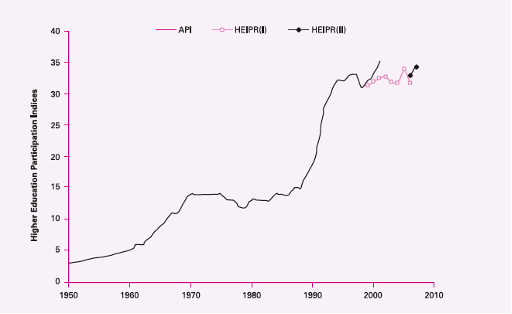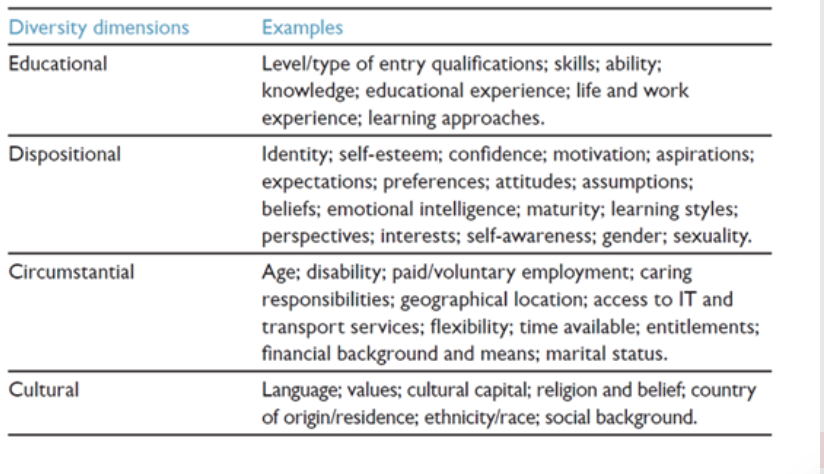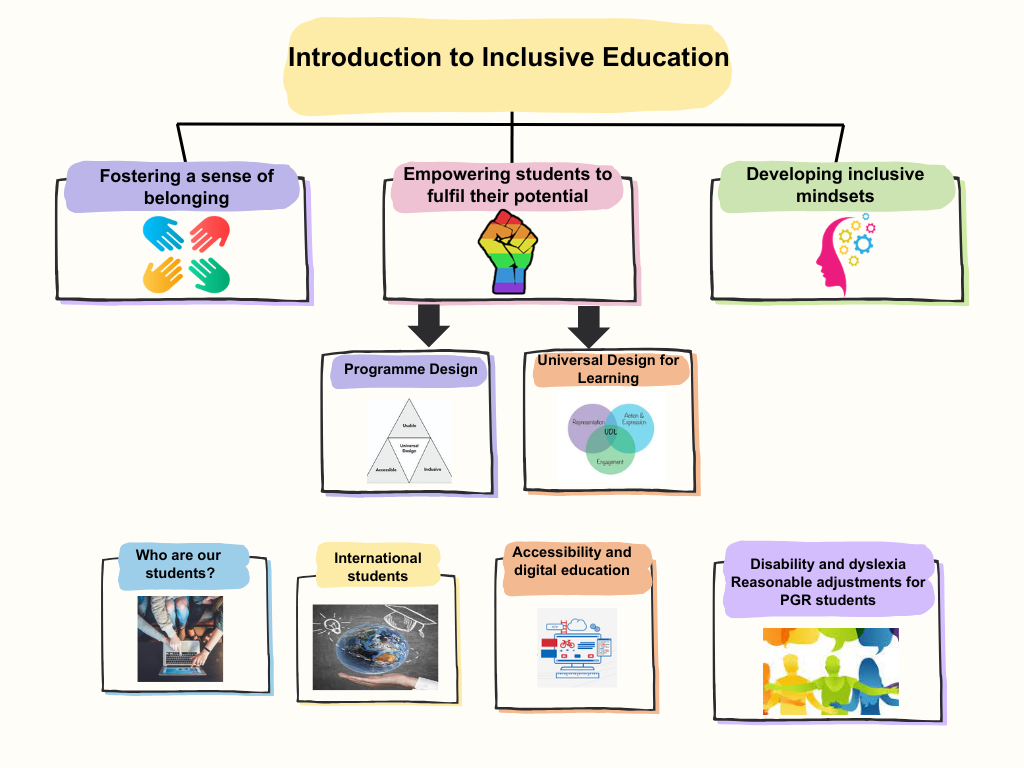Diversity of our student cohorts
Higher Education is more diverse than it has ever been. As we can see in the graph below, participation in Higher Education of UK domiciled people has risen dramatically since 1950, when less than 5% of the population went to University. This expansion of the higher education system to approximately 50% of school and college leavers has resulted in much greater student diversity.
This, in part, has also been driven by the widening access and participation agendas in all the UK nations, and equality legislation. At the same time internationalisation agendas have led to increased student mobility into UK higher education, rising from 226, 270 in 2012/3 to 314,790 in 2021/2, thus comprising 23.8% of the UK student population in that year (Universities UK 2023). In combination, these societal trends have led to greater diversity in our university community.


It is important to understand, respond to, and celebrate the rich diversity of our students and this “requires attention to the complex, dynamic, and intersecting identities that all learners and teachers bring to the pedagogical experience” (Lawrie et al. 2017).
In thinking about diversity we adopt a broad definition, utilising Thomas and May’s (2010) conceptualisation of four broad dimensions of diversity by which all students (and staff) may differ: educational, dispositional, circumstantial and cultural.

Whilst some of these characteristics are recognised in the Equality Act 2010 as protected, and some may be eligible for additional support from particular university services (such as disability), they all require us to consider the design of our teaching and our practices, to ensure all students have an equitable experience.
The Equality Act (2010) requires us to be anticipatory in our educational provision: therefore, we cannot wait until a student presents with a particular learning need or characteristic. Rather, we must design our adjustments from the outset, to cater for the majority of needs.
So how do we use an evidence-informed approach to understand who our learners are, and provide learning opportunities that are authentic, meaningful and relevant to all? Understanding the characteristics of Cardiff University students can help, and therefore, being aware of the data can help us realise the scale of diversity in our classrooms. Cardiff University data on diversity is available to staff here.
Where next?
Workshops
You can also develop your understanding of Inclusive Education by attending workshop sessions that relate to each topic. These workshops can be taken in a live face-to-face session, if you prefer social interactive learning, or can be completed asynchronously in your own time, if preferred. You can find out more information on workshops, and the link to book is here.
Bespoke School Provision
We offer support for Schools on Inclusive Education, through the Education Development service. This can be useful to address specific local concerns, to upskill whole teams, or to support the programme approval and revalidation process. Please contact your School’s Education Development Team contact for more information.
Map of Topics
Below is a map of the toolkit and workshop topics, to aid your navigation. These will be developed and added to in future iterations of this toolkit.

You’re on page 2 of 8 Inclusivity theme pages. Explore the others here:
1. Inclusivity and the CU Inclusive Education Framework
3. Fostering a sense of belonging for all students
4. Empowering students to fulfil their potential
5. Developing Inclusive Mindsets
6. Universal Design for Learning
8. Disability and Reasonable adjustments
Or how about another theme?
References
References
Hinchcliffe, T. 2021 The Hidden curriculum of Higher Education [Online]. Available at : https://www.advance-he.ac.uk/knowledge-hub/hidden-curriculum-higher-education [Accessed 30/8/22]
Hockings, C. 2010. Inclusive Learning and Teaching in Higher Education: A Synthesis of Research. York: Higher Education Academy. Available Online
Lawrie, G., Marquis, E., Fuller, E., Newman, T., Qui, M., Nomikoudis, M., Roelofs, F., & van Dam, L. (2017) Moving towards inclusive learning and teaching: A synthesis of recent literature. Teaching and Learning Inquiry 5 (1)
Parsons, L and Ozaki, C.C. 2020. Teaching and Learning for Social Justice and Equity in Higher Education.Switzerland: Springer Available online [link: https://librarysearch.cardiff.ac.uk/permalink/44WHELF_CAR/b7291a/cdi_askewsholts_vlebooks_9783030449391 ]
Robertson, Susan. (2010). Globalising UK Higher Education. Globalisation, Societies and Education. 8. 191-203. 10.1080/14767721003776320.
TES 2013 Now we are 50. Online: https://www.timeshighereducation.com/features/participation-rates-now-we-are-50/2005873.article
Thomas, L. and May, H. 2010. Inclusive Learning and teaching in Higher education. York: HEA. Available online
Share your feedback